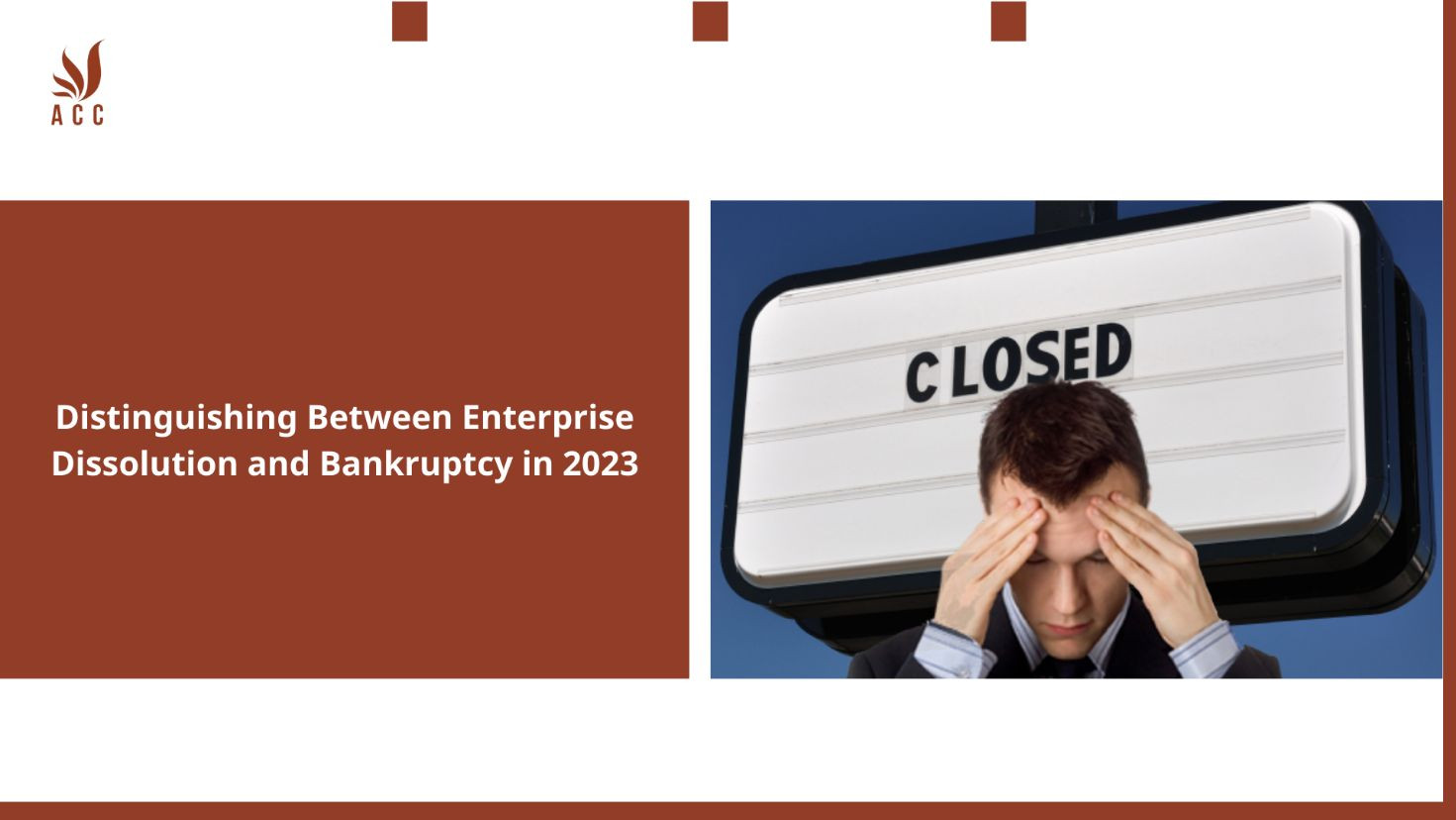
1. Distinguishing Between Enterprise Dissolution and Bankruptcy in 2023
In the dynamic world of business, financial difficulties can sometimes lead to challenging decisions. The dissolution of enterprises and bankruptcy are two distinct processes that emerge when a business faces financial hurdles. Let's explore each of them separately to grasp the nuances and differences between these crucial procedures.
2. What is the main concept of dissolution and bankruptcy of enterprises?
The main concept of "dissolution and bankruptcy of enterprises" involves the formal and often legal processes by which a business or company is either closed down or declared bankrupt.
-
Dissolution: This refers to the orderly closure or termination of a business's operations for various reasons, such as voluntary decisions by the owners, expiration of the company's term, or other specific reasons. The process typically includes settling debts and liabilities, distributing assets, and ensuring compliance with legal requirements.
-
Bankruptcy: Bankruptcy, on the other hand, signifies a situation where a business is unable to meet its financial obligations and seeks legal protection to reorganize or liquidate its assets to satisfy its debts. This process is usually initiated by the business itself or its creditors through a legal proceeding.
Both dissolution and bankruptcy are distinct processes with different implications and goals, but they both involve the cessation of business operations and the handling of assets and debts, albeit for different reasons and under different legal frameworks.
3. Dissolution of Enterprises
Dissolution refers to the formal process of winding up or closing down a business entity. This can occur for various reasons, and it's essential to understand the different aspects of this procedure.
Voluntary Dissolution
One primary reason for the dissolution of an enterprise is voluntary dissolution, where the owners or shareholders of a company make the conscious decision to terminate its operations. This typically involves following specific legal procedures and fulfilling obligations to creditors, employees, and other stakeholders.
Involuntary Dissolution
In contrast, involuntary dissolution occurs when a company fails to meet legal requirements, such as filing annual reports or paying taxes. Government authorities or interested parties can initiate the dissolution process through court proceedings.
During the dissolution process, the company ceases its operations, liquidates its assets, settles outstanding debts, pays off creditors, and distributes any remaining funds among shareholders or partners. The exact steps involved in dissolution depend on the jurisdiction and the legal structure of the enterprise.
4. Bankruptcy of Enterprises
Bankruptcy is a legal status that occurs when a business cannot meet its financial obligations and seeks protection from creditors through a court-supervised process. Bankruptcy aims to provide a fair and orderly resolution for both the debtor (the struggling business) and its creditors.
Filing for Bankruptcy
The bankruptcy process begins with filing for bankruptcy. The debtor files a petition with the appropriate court, initiating the bankruptcy process. This can be done voluntarily by the debtor or involuntarily by the creditors.
Automatic Stay
Upon filing for bankruptcy, an automatic stay is granted, which halts most collection activities, lawsuits, and creditor actions against the debtor. This allows the debtor time to reorganize or develop a repayment plan.
Reorganization or Liquidation
Depending on the type of bankruptcy filed, the business may either reorganize its operations and debts to continue operating (Chapter 11 in the US) or go through a process of liquidation where its assets are sold to repay creditors (Chapter 7 in the US).
Creditors' Claims
During bankruptcy, creditors are given an opportunity to submit claims for any outstanding debts owed to them. These claims are reviewed and prioritized based on bankruptcy laws.
Discharge or Debt Repayment
If the bankruptcy process is successful, the debtor may receive a discharge, releasing them from personal liability for most debts. In other cases, a repayment plan is established, allowing the debtor to gradually settle their debts over time.
It's important to note that bankruptcy laws and processes vary across jurisdictions, so specific details may differ depending on the country or region involved.
In conclusion, understanding the distinctions between the dissolution of enterprises and bankruptcy is crucial for business owners and stakeholders. While dissolution involves the formal closure of a business due to voluntary or involuntary reasons, bankruptcy is a legal process that provides relief to financially distressed businesses and their creditors. The choice between these two paths depends on the unique circumstances and goals of the business in question.
FAQs
-
What are the main differences between dissolution and bankruptcy? Dissolution is the formal closure of a business entity, while bankruptcy is a legal process for financially distressed businesses to seek protection from creditors.
-
How does voluntary dissolution differ from involuntary dissolution? Voluntary dissolution is initiated by the business owners or shareholders, while involuntary dissolution is typically triggered by a failure to meet legal requirements.
-
Are bankruptcy laws the same worldwide? No, bankruptcy laws and processes can vary significantly from one jurisdiction to another.
-
What happens during the creditors' claims stage in bankruptcy? Creditors have the opportunity to submit claims for any outstanding debts they are owed, which are then reviewed and prioritized.
-
Can a business recover after filing for bankruptcy? Yes, depending on the type of bankruptcy filed, a business may reorganize and continue operations or liquidate its assets to repay creditors.
Nội dung bài viết:






Bình luận